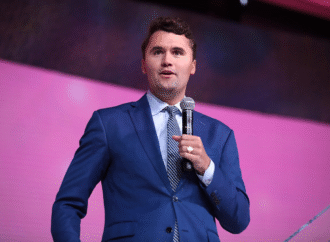Two hundred seventy votes. That’s all that’s needed for state legislatures to undermine the checks and balances imposed by the Electoral College. The National Popular Vote bill already has the approval of 16 jurisdictions with 196 votes. Once it hits a majority of the 538 electoral votes (270), it will be a binding agreement among these jurisdictions
When Al Gore won the national popular vote in 2000, but lost the election, he was the first to do so in over 100 years. Following this loss, California millionaire John Koza came up with a plan to reinvent the rules of the game. Koza proposed an “end run” that would allow states to circumvent the Constitution without amending it. Rather than state electors making their decisions based on their state’s composition, states would instead give way to the most populous cities.
President Trump’s win in 2016 renewed the discussion of whether the electoral college is an act of genius, or an outdated model whose time has passed.
Historically, Democrats such as President John F. Kennedy have supported the electoral college. But now, prominent rising Democrats, including Alexandria Ocasio-Cortez (AOC), are breaking with this precedent. Many Americans also appear to agree with her and are seeking a National Popular Vote (NPV). They reason that it is a good thing for the electors voting for President to go the direction of the popular vote. They also point out that the electoral college is like “affirmative action” for the states, a concept many supporters of the electoral college oppose. Doesn’t it seem hypocritical if we support affirmative action for states, but not for minorities?
Not at all, says author Tara Ross, who believes that the comparison is dishonest. Trent England of Save Our States pens similar sentiments in a recent USA Today article:
This is why Hillary Clinton lost in 2016. Instead of winning over small-town Americans, she amassed a popular vote lead based on California and a few big cities. She won those places with huge margins but lost just about everywhere else. And the system worked. The Electoral College requires more than just the most raw votes to win — it requires geographic balance. This helps to protect rural and small-town Americans.
In other words, the NPV proposal would, in the name of giving people power, undermine the voices of those in rural areas – the very voices that the media establishment ignored in 2016.
To win the popular vote, one could simply head to the most popular cities. Campaigns that had to balance attention to the variety of voters in different regions under the electoral college, could instead focus solely on people attracted to cities.
On the surface, John Koza’s model of circumventing the Constitution and abolishing the electoral college seems reasonable. But is his motive in leading the charge for National Popular Vote the concentration of power in states with higher population densities? If so, this would reduce people in rural areas to modern day ‘serfs’ who are less important to represent than the ‘feudal lords’ of California. Trent England elaborates further:
Rural America produces almost all our country’s food, as well as raw materials like metals, cotton and timber. Energy, fossil fuels but also alternatives like wind and solar come mostly from rural areas. In other words, the material inputs of modern life flow out of rural communities and into cities.
City dwellers may be eagerly adapting the NPV proposal, but are they doing so because they don’t see how interconnected all of our voices really are? Might ignoring real differences in culture between rural and urban populations, and general confusion about how best to represent diverse groups, make the Founders’ electoral college wisdom seem foolish to us?
—
[Image Credit: Lars Plougmann from London, United Kingdom, CC BY-SA 2.0]
















Leave a Comment
Your email address will not be published. Required fields are marked with *